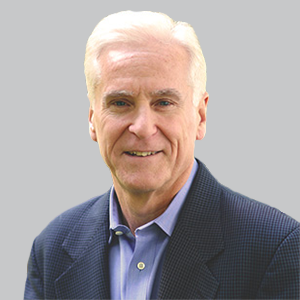Article
Pitolisant Approved for Excessive Daytime Sleepiness in Narcolepsy
Author(s):
With its FDA approval, the selective histamine 3 receptor antagonist/inverse agonist, branded Wakix, is the first and only therapy for narcolepsy which is not scheduled as a controlled substance by the DEA. It is expected to enter the market by Q4 2019.
Jeffrey Dayno, MD, chief medical officer, Harmony

Jeffrey Dayno, MD
Harmony Biosciences has announced that the FDA has granted approval to pitolisant (Wakix), a selective histamine 3 receptor antagonist/inverse agonist that enhances histaminergic neurons to improve wakefulness, for the treatment of excessive daytime sleepiness in adults with narcolepsy.1
It is the first and only therapy for narcolepsy which is not scheduled as a controlled substance by the US Drug Enforcement Administration. Already approved in Europe, the therapy is an oral, once-daily agent taken in the morning. It is expected to enter the market by Q4 2019.
"The approval of Wakix provides healthcare professionals managing people living with narcolepsy a new and important treatment option for their patients," said Jeffrey Dayno, MD, chief medical officer, Harmony Biosciences, in a statement. "Additionally, Wakix is the only non-scheduled treatment option approved for adult patients with narcolepsy."
Dayno told NeurologyLive that, with up to 200,000 Americans living with narcolepsy, "all of whom have excessive daytime sleepiness," the risk/benefit profile of pitolisant offers physicians the ability to address the unmet needs of those living with narcolepsy.
In the HARMONY 1 and HARMONY 1bis trials, the treatment showed statistically significant improvements in excessive daytime sleepiness over a 3-week titration period and a 5-week stable dose phase. The most common adverse events (AEs) occurring in ≥5% of patients taking pitolisant were insomnia (6%), nausea (6%), and anxiety (5%).
Data presented in 2018 showed that the drug led to long-term improvements in excessive daytime sleepiness, as measured by the Epworth Sleepiness Scale (ESS). Patients in the study had ESS scores of 16.8 at baseline, which were reduced to 13.4 after 1 year, and to 10.6—levels which are considered normal—by year 5.2
Additionally, the therapy showed that multiple symptoms of REM dysregulation were reduced from baseline to year 1. Symptoms of cataplexy were reduced by 76%, hypnagogic hallucinations were reduced by 54%, and sleep paralysis was reduced by 62%. The 5-year data on these symptoms was limited.
"We are extremely proud to bring Wakix to market for those living with narcolepsy, a chronic, debilitating, rare neurologic disorder," said John C. Jacobs, chairman and CEO, Harmony Biosciences, in a statement. "At Harmony, we share a vision to develop novel treatment options for people living with rare diseases, with a focus on those that affect the central nervous system. The approval of Wakix strengthens our commitment to making that vision a reality."
In June, Harmony presented pooled safety data from 4 placebo-controlled trials totaling more than 300 patients at SLEEP 2019. It was considered both generally safe and well-tolerated, with an overall incidence of AEs in the dataset of 49.4%, compared to 41.2% with placebo.3
Pitolisant has been available through an expanded access program called Pitolisant Expanded Access Clinical Evaluation, or PEACE, to those with excessive daytime sleepiness associated with narcolepsy in addition to cataplexy associated with narcolepsy. The small-molecule inhibitor was also granted a breakthrough therapy and fast track designation in 2017 as a potential treatment for cataplexy in those with narcolepsy, in which it has shown some success. In a 106-patient, phase 3 study, pitolisant was shown to reduce the weekly cataplexy rate by 75% from baseline compared with a decrease of 38% with placebo (rate ratio, 0.512; 95% CI, 0.43-0.60; P <.0001). In a post-hoc analysis, this benefit remained consistent across all patient subgroups.4
In a conversation with NeurologyLive, Michael Thorpy, MBChB, director of the Sleep­-Wake Disorders Center at Montefiore Medical Center, spoke about the challenges of diagnosing narcolepsy.
REFERENCES
1. WAKIX represents the first and only non-scheduled treatment approved for patients with narcolepsy in the U.S. [press release]. Plymouth Meeting, PA: Harmony Biosciences; August 15, 2019. finance.yahoo.com/news/harmony-biosciences-announces-fda-approval-120000845.html. Accessed August 15, 2019.
2. Harmony Biosciences presents 5-year data on pitolisant at international narcolepsy symposium [news release]. Plymouth Meeting, PA: Harmony Biosciences; September 11, 2018. harmonybiosci­ences.com/newsroom/harmony-biosciences-presents-5-year-data-on-pitolisant-at-international. Accessed August 15, 2019.
3. Scart-Grès C, Momah C, Roy M, Maski K, Piris S, Bogan RK. Sleep. 2019;42(Suppl 1):A244—A245. doi: 10.1093/sleep/zsz067.612. Presented at: SLEEP 2019. June 8-12, 2019; San Antonio, TX. Abstract 0614.
4. Szakacs Z, Dauvilliers Y, Mikhaylov V, et al. Safety and efficacy of pitolisant on cataplexy in patients with narcolepsy: a randomised, double-blind, placebo-controlled trial. Lancet Neuro. 2017;16(3):200-207.




